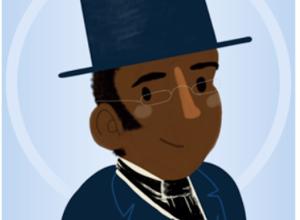New Exhibition at Beinecke Library Explores Historic English Manuscripts
New Haven, Conn.—Reading English, an exhibition opening tomorrow at the Beinecke Rare Book & Manuscript Library, celebrates the 80th anniversary of Yale University’s James Marshall and Marie-Louise Osborn Collection—a world-renowned collection of early modern British historical and literary manuscripts.
The exhibition, on view through Dec. 15, introduces the collection alongside its collector: James Marshall Osborn, a scholar and literary critic who played a prominent role in Yale’s s emergence as the leading center for literary criticism in 20th-century America.
“Over 80 years, the Osborn Collection has had a formative influence on early modern British scholarship, just as its founder intended,” says Kathryn James, exhibition co-curator and the Beinecke’s curator of Early Modern & Osborn Collections. “The collection continues to produce the same passionate discussions and debates that James Marshall Osborn engaged in with his colleagues over decades.”
Recent additions are exhibited alongside items from the collection’s founding. Works by historical figures such as Sir Thomas More, the Venerable Bede, and poets John Donne and Sir Philip Sidney are displayed. The exhibition also features remarkable examples of commonplace books—a type of journal in which people wrote poems, songs, Latin sayings, religious prayers, recipes, etc.—that provide detailed insight into ordinary daily life in England hundreds of years ago.
Drawn together, the materials on exhibit emphasize the collection’s original strengths—early modern British poetry, commonplace books, letterbooks, estate accounts, and grand tour diaries, among other areas—and the development of the collection over succeeding decades, through successive shifts in the rare book and scholarly landscape.
Also displayed are selections from Osborn’s personal archives documenting his studies at Oxford, his scholarly career at Yale, and rich relationships with colleagues and friends, such as Robert Penn Warren, Cleanth Brooks, and William Wimsatt.
Items on view include:
- Letters to Sir Philip Sidney, 1573-1581: This collection contains 65 letters to the Elizabethan poet Sir Philip Sidney, all but one written between 1574-1576, during the last two years of his travels on the Continent and first year back in England. As Osborn described it, it was a “miracle that so much evidence exists concerning any major Elizabethan figure.”
- John Donne, Satires and Poems, ca. 1613: The Osborn Collection has significant holdings related to John Donne. Sometimes these notebooks are coherent manuscript “editions” of the poems; in others, a reader has copied a poem alongside others circulating in the early 1600s. The variations - and similarities - between copies are an important source for scholarly editors in establishing the text of a poem.
- Aelfric, two adjacent strips from a homily for Palm Sunday, 11th century: Among the few fragments of Anglo-Saxon in any North American collection, these two parchment binding strips contain a few words from the homilies of Aelfric, Abbot of Eynsham, that date from around 1000.
- Sir John Mandeville, Travels, in Middle English, ca. 1440: Believed to be a true account in the Middle Ages, the narrative follows a fictitious knight, Sir John Mandeville, who supposedly journeyed through Europe, the Middle East, Africa, and Asia. Originally written in Anglo-Norman and circulated between 1357 and 1371, this rare copy, acquired in 2011, is translated into Middle English.
- William Hill, Commonplace Book, early 17th century: This extraordinarily ordinary volume shows how a reader might learn to read and write, and the formative exemplar texts which he or she might draw together from printed commonplace books, didactic literature, and other canonical or schoolbook sources.
James Marshall Osborn was born in Cleveland in 1906 and grew up in Ohio and Wisconsin, the son of a civil engineer. He began collecting English manuscripts in 1934 while pursuing a Bachelor of Literature degree at the University of Oxford. Four years later, Osborn and his wife, Marie-Louise, settled in New Haven where he enjoyed a distinguished 38-year career at Yale. He also was the proprietor of a successful dairy farm in Wallingford, Conn.
Reading English: An Exhibition Celebrating the James Marshall & Marie-Louise Osborn Collection is curated by Kathryn James and Raymond Clemens, the Beinecke’s curator of Early Books and Manuscripts.
The Beinecke Rare Book & Manuscript Library is one of the world’s largest libraries devoted entirely to rare books and manuscripts and is Yale's principal repository for literary archives, early manuscripts, and rare books. The Beinecke’s extensive collections are used to create new scholarship by researchers from around the world.
A slideshow of items on display is available at: http://beinecke.library.yale.edu/about/news/new-exhibition-celebrates-osborn-collection















